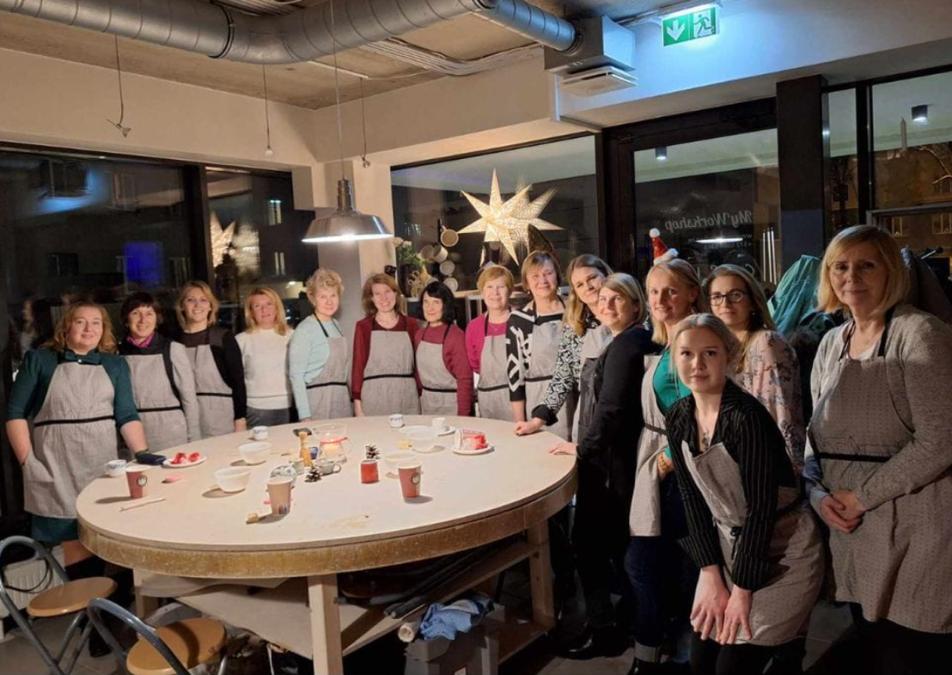My Journey to Becoming a Kindergarten Director – Lifelong Learning and Challenges
Leading a kindergarten is not merely a job title-it demands deep dedication, consistency, and continuous learning. How does one become an educational leader? Which experiences and values shape them, and how can motivation be sustained over the years amidst challenges?
I spoke with Anneli Laamann, director of Tabasalu Teelahkme Kindergarten, whose path from teacher assistant to educational leader is rich with life lessons, experimentation, and heartfelt decisions. We discussed her career, project‑based learning, mental wellbeing, and future visions for early childhood education in Estonia. This interview is meant for anyone interested in the heart of the education world-and especially for those who hold kindergarten teaching close to their hearts.
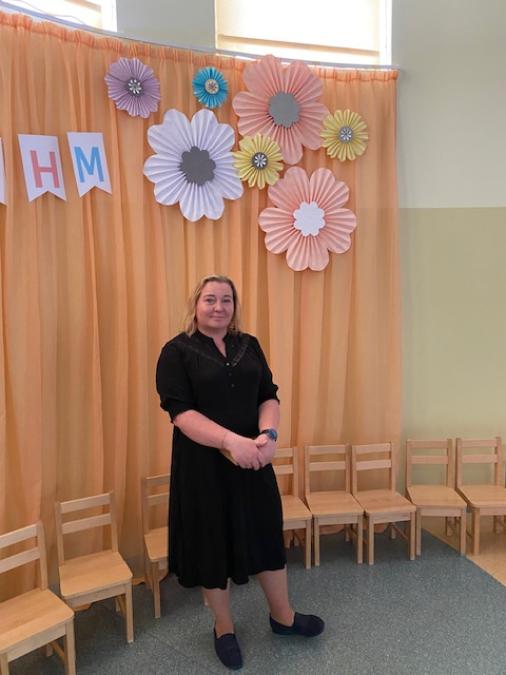
Tell us a bit about yourself. How did you arrive in the world of education and kindergarten leadership? Was it a conscious choice, or did life guide you there?
In a sense, it was not a deliberate decision. My longest professional chapter has been as a kindergarten teacher. After secondary school, I wanted to study Early Childhood Education and Psychology at Tallinn University-that was a conscious choice. But in the ’90s, the program was very popular, largely due to the psychology component. Many who failed to gain admission to Tartu University’s psychology program tried this route, even though the psychology training here wasn’t very comprehensive.
Since I didn’t get in on the first two attempts, I began working at a nearby kindergarten. I started as a teacher assistant, and within a year I became a nursery teacher-at age 20 I was responsible for 17 children, which was a huge step. In the third year, I moved with the same group to a preschool class and began studying part‑time. I spent five years at Tallinn University and earned my kindergarten teacher diploma.
After ten years at Mooniõite Kindergarten in Mustamäe, I was invited-after the birth of my two children-to join the newly opened Teelahkme Kindergarten. I worked as a teacher there for about three years. One day I saw an ad that a Dutch person was planning to open a kindergarten in Estonia. It sounded exciting and unique. I applied and was hired at Naba Kindergarten in Pirita, where I worked for 12 years.
Naba was a small private kindergarten with four groups and a deeply inspiring team. Young leaders recently graduated in educational leadership brought innovation and energy. It was there I grew professionally-became a lead teacher-then decided to pursue a master’s degree. Although my prior five‑year training was equated with a master’s, I still wanted further study.
I began at Tartu University, then transferred to Tallinn University. In the master's program, we were treated as future education leaders-many classmates were already kindergarten heads or became so during the program. The curriculum emphasized leadership-both in Tartu and Tallinn. I didn't go in aiming to become a director, but by graduation I felt ready: after leading a kindergarten group for 26 years, perhaps I could lead adults too.
At first, I didn’t dare apply for director-I served two years part‑time as deputy. My then‑director encouraged me, saying that position, literally being between two roles, was his most challenging.
Then the position at Teelahkme Kindergarten opened-where I had previously worked. I decided to try. Even if I didn't get it, it would be valuable experience. I loved Naba but thought, if not, no big deal.
I applied-and I was selected. In April 2017, I began leading Teelahkme Kindergarten. I remember one parent writing a farewell letter to me: “A great loss for Naba and a huge gain for Teelahkme.” It touched my heart deeply. Parents were sad about my departure and later, approaching me in the street, said the group wasn’t the same-but they understood that life moves on.
Beginning at Teelahkme felt like being thrown into deep water. In Tallinn, new leaders are assigned mentors, but at the time there were no such supports. I asked the municipality if I could have a mentor—they said no. My greatest support came from the accountant, who helped me understand when and how to write official orders. Somehow I survived, though the start was tough.
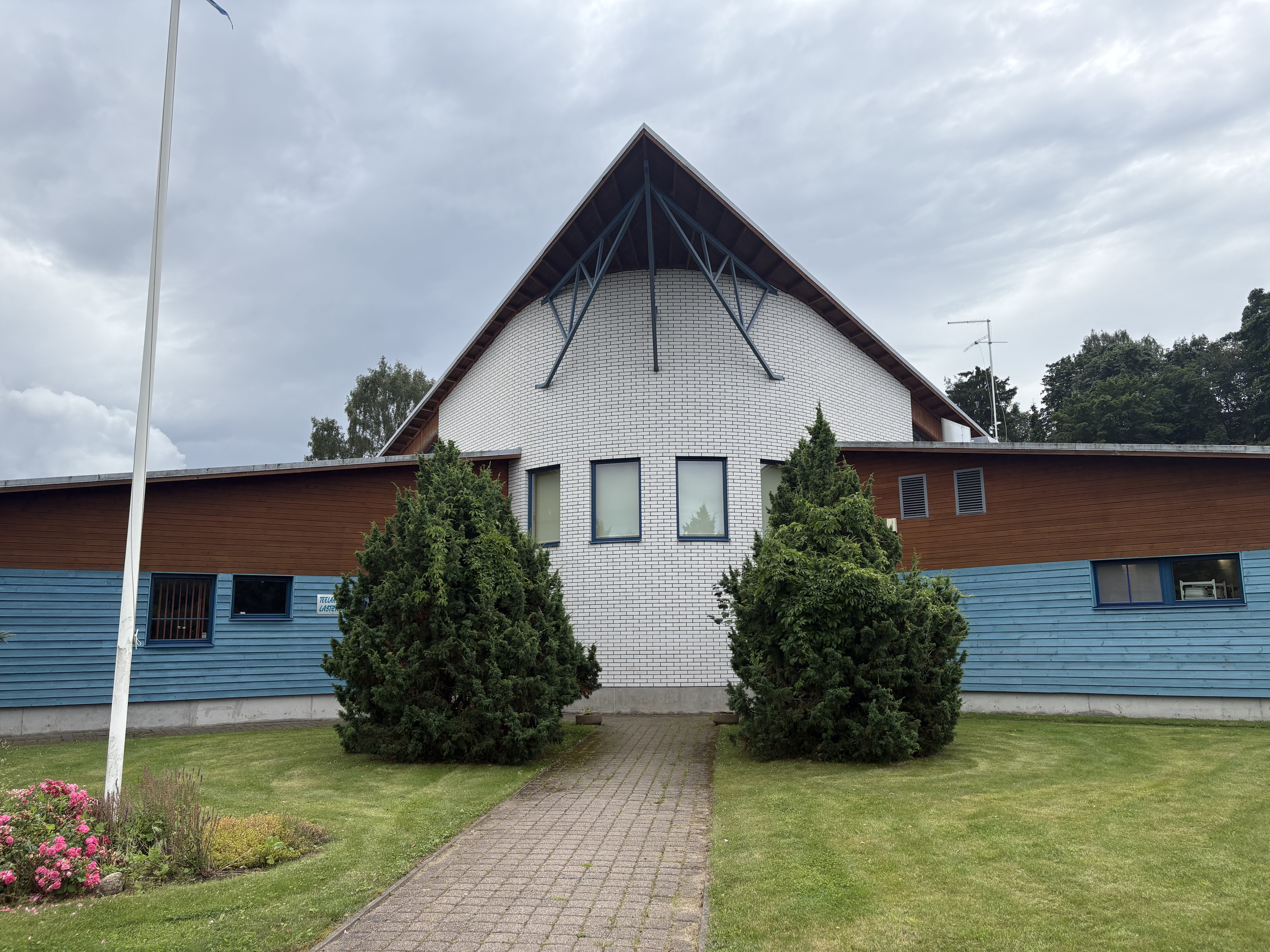
When did you feel, “Now I know what I’m doing”? That you knew how to act, what to do, which directives to draft and where to send them?
Fortunately, some foundational documents created by the previous director remained-although she left in December and I started in April, an interim leader had filled in. Thanks to that documentation, I had a template for how things were done.
My first major task was staffing. Many people had left, several groups needed personnel, one teacher was going on maternity leave, and the finance manager had already resigned in January. So I had to build the team first. At that point, I started “swimming.”
But realistically-only after about three years did I really begin to fully understand expectations and my own limitations. Even now, regulatory changes catch me by surprise-municipal directives, etc., which I have to track down myself. Tallinn University’s legal coursework helped-I know how to find and interpret laws. In the end, things become manageable, but there's always room for growth. As a teacher I once thought, “When will I ever know everything?”-and the answer was, never. New programs, new methods always emerge.
From the outside, a kindergarten may not seem like much is happening-but in reality, it's constantly evolving: anti-bullying programs, VEPA, social skills development, and various methodological tools. Old practices are revived; new approaches arise. It’s not a stagnant pond.
Leadership is similar. Trends change-strategic leadership, servant leadership, learning organizations… understanding and applying each requires focus. It’s a whole world unto itself.
What are the most important personal qualities a kindergarten leader must have?
I believe everyone has strengths to build on. But some qualities are fundamental. First-courage. You must dare to decide and take responsibility. A leader also needs to be a good communicator-people-oriented, empathetic, and understanding.
Additionally, a kindergarten leader must be an expert in the field. You need awareness of early childhood education: current theories, trends, developments. Only then can you lead your team in innovation and growth. It’s essential to know today’s learning approaches and where education is headed, so your kindergarten stays progressive and modern.
Knowledge is critical, but so is the ability to connect with people. Most leadership happens not behind a desk, but in interaction-with staff, parents, and partners. Yes, paperwork and navigating protocols are part of it-but ultimately, it comes down to guiding and supporting people.
Thinking of your own journey-after years of responsibility-have there been moments when you wanted to give up? When it all felt like too much?
There are indeed moments like that-especially when you feel no support from above. If everything runs smoothly internally-team is supportive, atmosphere is good-but the local government seems indifferent-it’s demoralizing. Yes, they respond to your emails, but no one asks: “How are you? Do you need help? Are you managing?”
As a leader here, I’ve faced many challenges and sometimes wished someone “higher up” would check in. Most changes and developments we implemented were driven by me and my team alone. Little support or recognition came from above.
Leadership in the municipality changes frequently-deputy mayors, education heads… I’ve lost track how many. Just as you build frictionless trust with someone, they’re reassigned. That makes things harder and fosters isolation.
For example, opening Vääna‑Jõesuu Kindergarten (two modules) was a major effort. Then we added two more modules here, and last year we launched the Tabasalu nursery building-all largely my responsibility, alone. No one asked “How’s it going? Are you finding staff? Need help?” They just attended openings, shook hands, gave flowers-and that was it. They didn't engage in the process.
What keeps me going is the children and parental support. Also the joy of strong colleagues-like waking up thinking “Great, today I’ll see Maret!” A positive atmosphere matters immensely.
Trusting relationships with parents are also vital. If someone constantly complains or undermines, it can sap a teacher’s motivation. Watching how everyone gives their best and feeling unseen is painful.
Fortunately, we’re blessed here-parental satisfaction is high, and that drives us. That feeling of coming to work in the morning? That’s what keeps me going.
How would you describe your team at Tabasalu Teelahkme Kindergarten? You have two buildings, right-Teelahkme and Tabasalu?
It’s a small kindergarten-nine groups total: four at Teelahkme, five at Tabasalu. Leadership comprises four: at Teelahkme, we have a deputy; at Tabasalu, an education manager; plus a finance manager with administrative duties-and me as the fourth.
Our division of labor is well established. The deputy and education manager handle ELIIS, daily logs, project plans, curriculum, and development plans. I still check ELIIS at times, but daily administration is off my plate. When I started, I had no deputy for years and did everything myself… but that was when we only had four groups!
Now it's easier-I can delegate reliably. They are my right hand-people to consult with, find solutions, and make decisions together.
Of course, there are staffing limits. At Teelahkme, the deputy works just two days a week; at Tabasalu the education manager is there four days. That means some days no leadership presence, which brings limitations. But overall, the system works and people are committed.
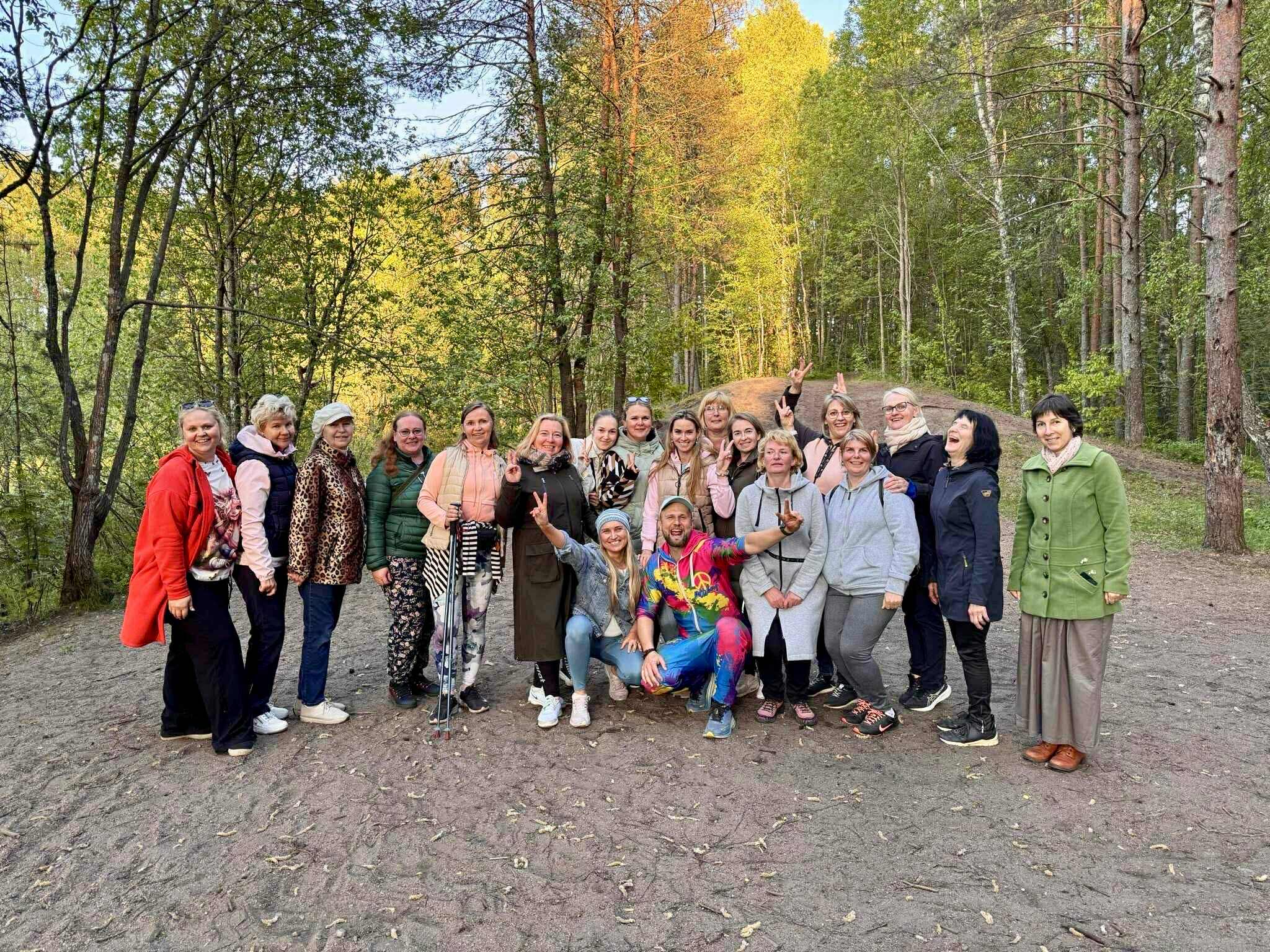
What have you learned over the years about developing a strong team? How to maintain and grow that synergy? I gather things work well for you-how do you keep it that way?
Life teaches. One of the biggest lessons: when tension or issues arise in the team, address them immediately. Don’t wait and hope it resolves itself. Have the hard conversations without delay. Otherwise the problem grows.
I especially learned this when Tabasalu building opened. New building often means staff adjustments-people come and try, but discover the environment doesn’t fit. Sometimes values misalign; sometimes working in a nursery just doesn’t suit someone. I’ve had tough talks-telling someone this may not be the best place for them. In some cases, that meant warnings or suggesting they leave. This is not natural to me-I dislike such confrontations-but leadership sometimes requires uncomfortable steps to preserve the team’s strength.
Sometimes acknowledging that while a person is valuable, they may not be the right fit for this specific role is necessary. These are hard but valuable moments-learning to conduct difficult conversations that leave the person feeling appreciated, not attacked; understanding the role wasn’t a fit, not that they are worthless.
Teacher mental wellbeing, health, and burnout are increasingly topical. How do you handle these issues?
Teacher work is incredibly intense. I fully realized it only after becoming a leader. Then it felt like stepping off a high-speed train. As a teacher you’re in the wheel all day-17 children asking, needing, directing. Then as a leader, suddenly you can sit and write, uninterrupted. It almost felt like luxury.
This awareness made me focus more on teacher wellbeing. Lunch break may be the only moment to pause: to sip coffee, fill ELIIS, write daily logs. That’s why teachers aren’t thrilled about new requirements that limit “quiet activity time” during children’s rest-those breaks are essential, not optional.
This is where teamwork comes into play-support and coverage. We have an agreement: if someone feels they’re “in the red,” they signal the need and can step out to calm down, while a colleague takes over. The same applies during nap time-coverage is rotated so one can sip some coffee in peace. These small agreements prevent burnout.
We’ve also become more flexible with working arrangements. Younger generations often don’t want full-time jobs; some say, “money isn’t everything-I’d like a four-day week.” If possible, we accommodate. Some now work part-time-assistants often share a role. This complicates scheduling-especially during illnesses or studies-because a part-time worker may not pick up overtime. But we understand this is a new generation’s mindset: they want work-life balance, to be present for their own young children. When employers support that flexibility, satisfaction and loyalty grow.
We use HR software for time and payroll, but staffing remains complex-especially ensuring at least two staff in preschool groups and three in nurseries. We hired part-time substitute staff, but sometimes they’re insufficient.
At Tabasalu, substitute arrangements fall to the education manager-but occasionally I step in myself. I’ve covered mornings and evenings when no one else is available. I’m familiar with teaching-though unexpected coverage is a challenge-but it keeps me connected to the children. I know all the 80 kids in Teelahkme and 68 in Tabasalu by name and face.
Children sometimes ask, “Which group are you in?” I reply, “I don’t have a group.” They’re surprised: “How is that possible?!”
When I subbed in one group for weeks, they called me simply Anneli or teacher. A teacher assistant once asked that I be called “director,” but a child stamped her foot and said: “No-it’s Anneli!”
I’ve never insisted on “director.” Our culture isn’t like school-you don’t stand when I enter. They’re used to me being part of the space-not someone who sits only in an office.
You’ve led project-based learning trainings for years. What about that methodology captivated you most?
My interest in project-based learning began while I was a teacher. At that time, E stonia had little information or training on project learning-but I was drawn to its connection with the Reggio Emilia approach, where projects are central. I knew it meant deep exploration, and that attraction pulled me in.
At Naba Kindergarten, there was already a solid project system. Initially it was teacher-guided—choosing weekly or monthly themes. Over time we began asking children what they wanted to learn and writing down their questions. Themes were shaped by their interests.
It aligned with project-based learning: theme emerges from children’s interests, teacher aligns it with curriculum, explores its depth, maps prior knowledge, and then investigate like little scientists.
I found the traditional cycle of repeated yearly themes-autumn, vegetables, etc. - tifling. We’d engage deeply midweek, only to close the theme by Friday. Many ideas remained unexplored. So at Naba I extended themes by splitting them across a month and approaching different aspects weekly. That depth was thrilling for both teachers and students-finding field trips, new materials, observing their enthusiasm.
Tabasalu’s environment practically begged for project learning. The architecture supports Reggio Emilia: open space, natural light, transparency, shared areas, outdoor forests, and sea. It supports hands-on, nature-based, inquiry-led learning.
Reggio isn’t a fixed method-it’s a philosophy. Projects offer structure, so we followed that path. While I came from a teacher-led mindset, here we consciously experimented with child-led themes.
Seven years later, project-based learning is embedded in our daily work. Some teachers are still building confidence-letting go of teacher-led methods can feel scary-but more and more they see its impact: children ask questions, want to investigate... child-led inquiry is the soul of modern pedagogy, and project work supports it superbly.
Teachers say it’s exciting and instructive. We had a ship-themed project inspired by a documentary about the Estonia-children asked about the setback, investigation grew into broader topics of ship types. We took a field trip to the port cruise ship, hosted a captain-teachers themselves said, “I learned too; I didn’t know front, rear, different ship types.” Teachers and children became fellow explorers.
Our current focus is making learning visible-learning walls, etc. We’ve just started; there’s plenty of growth ahead. Project-based learning is part of our daily routine-and the fact that teachers themselves find it engaging is a major bonus.
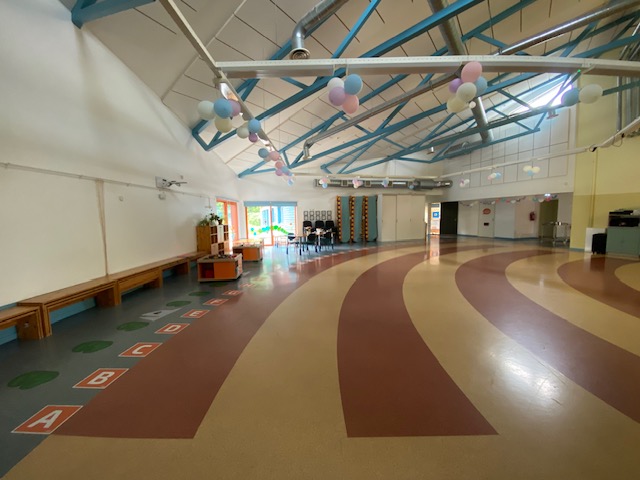
Project work is ingrained at Tabasalu, but many kindergartens haven’t adopted it. What would you say to teachers or leaders hesitant about starting?
Project learning requires professional maturity. To do it well, teachers must understand the national early childhood curriculum and integrate domains-math, literacy, development-so children don’t miss essential learning.
Some kindergartens have rigid structures-like weekly schedules approved by deputies, and they enforce them strictly. In some Estonian Russian-language kindergartens, a controlling leadership style still prevails, making it hard to transition to flexible, trust-based approaches. In Tallinn there's more innovation, but not all teachers are ready.
Some are just starting, or come from non-pedagogical backgrounds, lacking deeper curricular understanding, so project work feels overwhelming. My advice: start gradually. See what small steps you can try. Begin where you feel comfortable. You don’t need to shift everything at once-the key is curiosity and willingness to experiment.
Also understand that project learning isn’t the only method. There's thematic teaching (more teacher-led but deep), and discovery learning for younger children. Each method has strengths. Teachers must choose what fits their group. Truthfully, children learn in any case-it’s just different in how they learn and how much space they have for independent thinking and inquiry.
Project learning aligns strongly with modern pedagogy-but for its real adoption, organizational support is essential: teacher autonomy and an enabling environment. We introduced it step by step, and it's been a worthwhile journey.
You run project-learning trainings—do they help kindergartens adopt the method? What is the actual focus?
Training varies widely-each kindergarten has different needs. Some already run project-based groups; others are just gathering courage or seeking support to involve the whole team. Some are at the very start and want to simply understand what project learning is.
Others are advanced-interested in pedagogical documentation, learning environment development, child participation, deeper project structuring. Each training is a bespoke tailor-made approach: first ascertain the group’s current level and needs. I wouldn’t lecture A to Z if they’re already advanced. Rather I share experiences and discuss next steps.
The trickiest scenario is when management forcibly imposes project learning training-“we’re all switching”. From teachers’ faces, you see skepticism: “what’s wrong with what we’ve been doing?” Then I feel like a missionary needing to sell the method-hardly productive.
It’s much better when teachers initiate-when they’re curious and want encouragement. Some have even reached out asking to visit our kindergarten-to see it in action.
But even that can be deceptive: a single morning visit might not reveal the actual project depth. Often I have to explain the process: how projects begin, how they evolve, what children actually experience. Sometimes it turns out teachers already know the method-they just needed validation that they’re doing the right thing.
And what about digital tools and cooperation with parents-what tools do you use for work? ELIIS is one; is it more technical or a meaningful assistant? How do you perceive it?
ELIIS is both a technical and meaningful support tool. It helps make children’s days and learning visible to parents. For instance, in our nursery, many photos and videos are uploaded. Young children can’t verbalize their day, but photos and descriptions enable parents to see what their child has experienced. ELIIS allows uploading logs, photos, videos-and that overview is invaluable for parents.
For teachers, ELIIS is an important planning tool: it houses project plans, development records, and essential documentation. For parents, it’s a window into kindergarten life-letting them see their child’s activities.
Parent engagement varies: some log in daily, others once a year, even only in the final group before school. We’re getting more systematic-for spring meetings we emphasize ELIIS sign-up. In the smaller building, 100% of parents are on board; new groups also see good participation.
Still, some parents rely on Facebook for daily updates, making ELIIS secondary-even though ELIIS records the day’s activities, not just images. Our deputy closely monitors it-if a day is missing, she checks who worked that day and reminds teachers. This ensures parents receive a complete view.
What other digital tools do you use, and how do you ensure balanced use?
Beyond ELIIS, we use interactive TVs and projectors. Each group has a tablet to control robotics tools. We also have Alpa Kids educational games on the tablets, which the children enjoy.
We don’t consider ourselves massively digital. The children love the robotics toys—they’re like electronic toys. We have the basics and use them about once a month in each group.
Teachers always check: what does this tool actually teach? We don’t chase trends blindly. If April is “digital month” and robotics is mandated weekly, it becomes forced. Driving a robot to an oak tree doesn’t effectively teach about trees resting in nature.
Digital tools are good for variety-but not as the goal. Our view: digital is a supplement, not the objective.
One area I’d like more focus on is animation and cartoons-especially at the end of projects. For instance, creating a theme-related cartoon with paper cutouts or plasticine. The tools exist—but no one has taken the leap yet. It requires time, planning, courage-but would be immensely valuable both for children’s creativity and teacher professional growth.
When viewed from parents: what role do you see for them in early childhood education?
Legally, kindergarten is a supportive organization that aids parents in their parenting role. In practice, parents often say: “You’re the experts-teach.” We understand-kindergarten days are long-about nine hours. A parent sees their child briefly in the morning and evening; by 6pm they pick them up and bedtime begins around 8 or 9.
That means we see their awaken child more during weekdays than their parents do. Most children attend regularly-only a few families take one day a week off, and the main absence reasons are illness or travel. Hence, kindergarten’s teaching and upbringing role is often larger than the family's.
Cooperation works most of the time-except when a special need appears; the parent may resist acknowledging it, hesitate to participate due to anxiety or guilt-and that stymies collaboration. Still, most parents entrust us with their child, hoping “please help raise them right.”
Teachers who suggest home reading or letter practice sometimes get backlash-parents say “that’s your job.” We understand-we have the methodology, materials, and understanding of how to teach reading, writing, phonetics. A parent might teach letters as “ELL,” “EMM,” “ESS,” but later we need to correct them to “SS”-so at some point boundaries must be drawn: what is kindergarten’s responsibility, and what is the family's.
What do you see on a visit to Finland and Sweden? How does early education differ there?
We’ve visited Finland and Sweden in recent years; the differences are clear. Our approach is heavily influenced by post-Soviet habits-emphasis on “learn, learn”-with structured schedules: multiple native-language or math “lessons” weekly. Some still use the term “lesson,” saying during a lesson no one may interrupt.
That mindset remains-kindergarten is viewed as a formal educational institution, and teachers feel they must instruct. Questions like “what if they don’t learn autumn characteristics without an autumn project?” reveal this embedded culture.
In Finland and Sweden, it's much more relaxed. Emphasis is on general skills: being a good friend, communication, sharing, engagement. Kindergarten days are shorter, finishing around 4 or 5, and families don’t expect major learning-they want the child to feel good, play, develop socially.
We, by contrast, position kindergarten as a learning institution-and that shapes teachers. Even with project work, questions like “What if they don’t learn this?” arise. But sometimes we just need to trust the process and children’s innate curiosity-learning happens even outside structured “lessons.”
Has any parent collaboration project stood out to you? Something done together with parents?
Our groups often engage parents in projects. For a sports-themed project, parents brought their hobbies-tennis, rugby; one came with windsurfing gear. It was thrilling for children-direct exposure and real-life experience.
Home-based research was included-like for a woodland animal theme. A child picked an animal, researched with a parent: where it lives, what it eats, number of offspring. They made posters and presented them in circle time-often parents participated too.
Similarly, they researched countries or birds at home and presented in kindergarten. A parent-led “expert session” sometimes occurred-introducing their profession, speaking on interesting topics, or helping organize field trips.
One particularly memorable project involved books: a parent invited renowned author Andrus Kivirähk. That was huge for children and teachers.
Usually teachers post a weekly message asking if anyone wants to participate or share expertise. We don’t force parents, but we create opportunities-and many are delighted to join. Voluntary, meaningful collaboration is the most valuable.
Looking ahead-how do you envision the future of early childhood education in Estonia? What is moving in the right direction, and what needs more attention?
I believe early childhood education in Estonia is generally moving correctly—toward child-centered approaches. The new Early Childhood Education Act emphasizes free play, creativity, communication, and cooperation skills. More focus is on rolling games, social time, completing activities-not timed and broken schedule.
Learning days should flow organically, not be compartmentalized. More play, more self-motivation, more time to dive into activities. That shift toward child-centered learning based on interests is very welcome.
Outdoor movement is also getting more focus-and that’s excellent. Children’s natural need to move and spend time outside must be preserved and intentionally valued.
Given Estonia’s digital orientation, digital education is included in the new law-but it must be implemented consciously. In Finland, there's a strong emphasis on media literacy-teaching children to navigate digital spaces, distinguish real from fiction, understand safe and unsafe content. Here that is only a small part of “self and surroundings.”
We should start conversations with children early about digital hygiene-screen content, how technology affects them, especially as AI becomes more prevalent and might confuse or mislead children. It’s vital they learn to differentiate real and virtual.
Overall, I’m positive. We’re moving toward child-centered, creative, collaborative, and digitally safe education. Our responsibility is to maintain that direction-wisely, humanely, and mindfully.
What would your dream kindergarten look like-if no limitations existed?
I actually worked in such a dream kindergarten for 12 years. What made it special was mainly its location-right next to a forest, Pirita canyon, a river, a beach, and near a bus stop. It enabled children to learn from real experience-not just pictures. It created true freedom to explore.
To me, a dream kindergarten is one where you follow children at their own pace-not constantly rushing. Where the learning environment is rich and alive. Where learning happens through experience and inquiry. And relationships matter-supportive, honest, warm ones.
Such a kindergarten can be created even in a stone-city center if there's will and principled leadership. A dream kindergarten is where children feel good and staff feel good. Where colleagues have safe, supportive relationships. Where parents feel comfortable leaving their child inside, knowing they are in the best place.
Most importantly-dream kindergartens are staffed by professionals who truly want to teach-they see it as a calling, not just a job.
It doesn’t have to be luxurious or glitzy-but it must be a place of respect, safety, and meaningful learning. That’s what defines a dream kindergarten.
If you could change one thing in Estonian early childhood education—regardless of legislation-what would it be?
I’ve been in this field so long I didn’t notice anything catastrophic in the new law. But if I could change one thing, it would be the length of kindergarten days and societal attitudes toward them.
In some kindergartens children can be there until 7 PM, and here until 6:30 PM-meaning ten-hour days. While kindergarten can sometimes be safer than home, it’s still an unbalanced and very long day for a young child.
Sometimes we meet one-and-a-half-year-olds barely up to my knee, and parents say: “They’ll be here until 6:30.” To me that sounds like the child is being “placed” like a library book. But a child is a living being whose mental and emotional health requires family time and bonding.
I want to change the view that kindergarten is a place where you drop off your child until late. Long days tire kids-they begin to “wait.” At 4 PM when the first parents arrive, they go into “ready mode”-every ring of the bell they think: “Is that my mom?” Imagine a small child waiting two hours-heart full of hope, on edge with every ding. That’s not just logistics-it’s emotional.
I realize families need to work, situations differ-but I believe pick-up time could shift earlier. If pick-up happened between 5 and 6, it would be better for children. For the smallest-nursery-aged-a 4 to 5 pick-up is ideal. So they still get to be with family-beyond just bedtime.
A child is not a logistical unit-they’re humans-and their day needs balance and closeness. If I could change something, it’d be a cultural agreement: kindergarten days shouldn't be so long. Childhood deserves more family time, more real living.
What was your most recent “aha” moment related to work, a child, or a teacher?
My true “aha” came when I was nominated Harjumaa Educational Leader of the Year. It was a big surprise, especially discovering I passed the regional round and am moving to the national round.
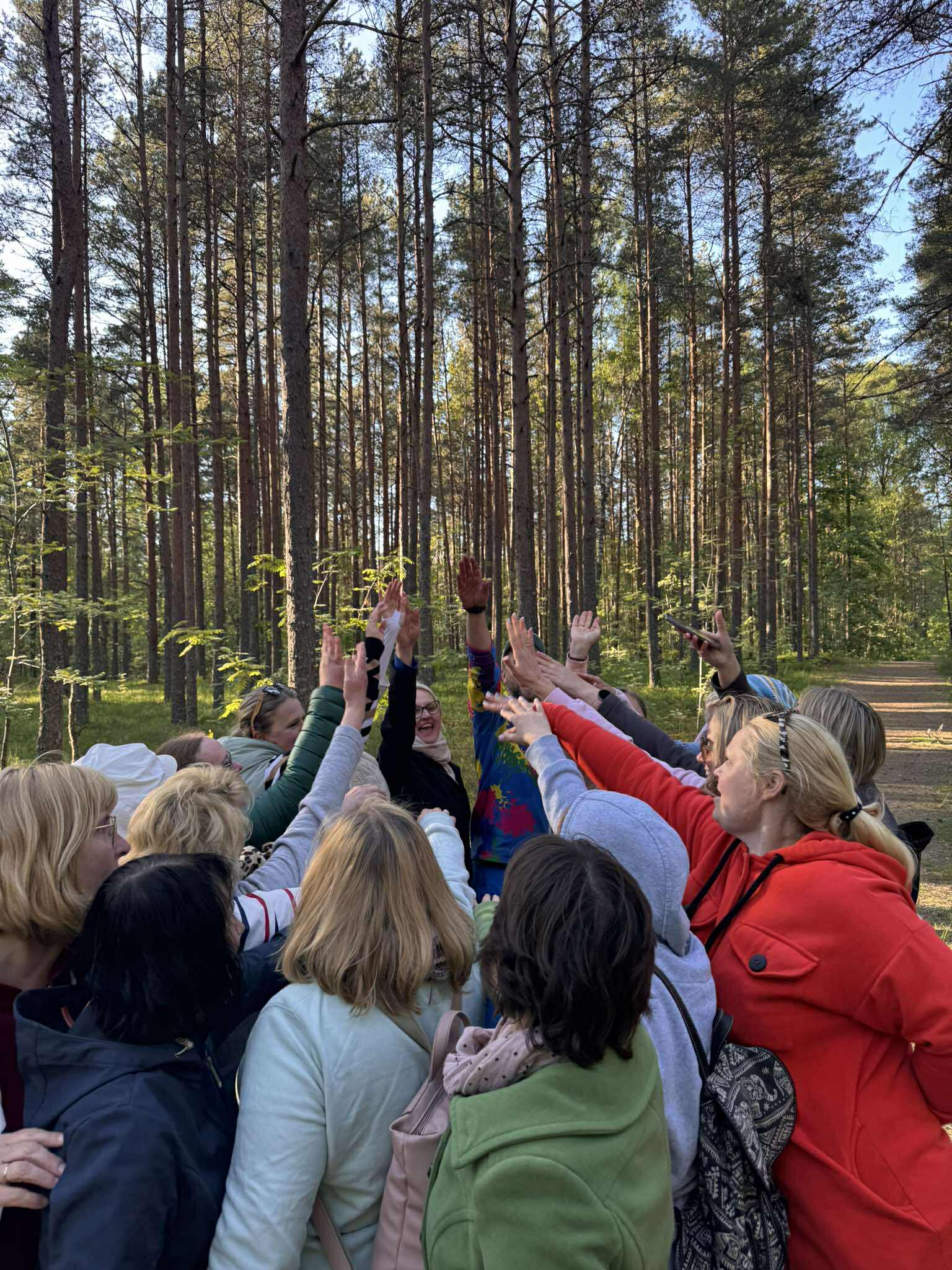
What would you advise Estonian kindergarten leaders to dare more or give up?
People are doing incredibly good work those I know and those in the union of over five hundred teachers. They’re exemplary and wouldn’t be there if they weren’t passionate. I think they should value their work more.
Fortunately, that acknowledgment has grown over time. It used to be awkward to say, “I am a kindergarten teacher”people would stereotype as “maybe you’re a loser.” Now they say: “I am a teacher. I am a kindergarten teacher.” That shift is significant. I genuinely hope that stays: that people feel proud of the profession and speak openly about working in kindergarten and do it with joy.
Conclusion
Anneli Laamann’s journey from assistant to inspirational educational leader shows that every experience, every conversation, and every child’s smile adds to the learning. Her honest and warm responses mirror the joys and challenges of education-underscoring the deep meaning behind leadership, teaching, and growth. Kindergarten is more than a building or childcare-it’s a community where genuine relationships, curiosity, and safe self‑discovery are born.
Thank you, Anneli, for sharing your story, experiences, and insights. You inspire and encourage others in education to continue with both heart and wisdom.

